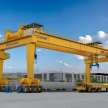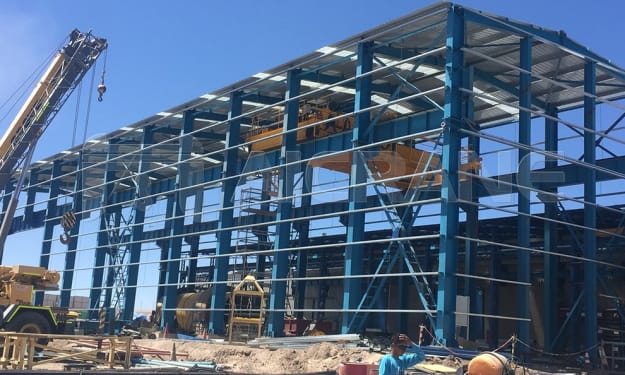
Marine hydraulic towing winches are indispensable assets in the maritime industry, offering the power and precision needed to tow vessels, assist with docking, and handle various offshore operations. One of the crucial parameters determining the performance of these winches is line pull—the force exerted by the winch on the towline. In this article, we will explore the intricacies of calculating line pull for marine hydraulic towing winches, shedding light on the factors that influence this critical measurement.
Understanding Line Pull:
Line pull, also known as line tension or pulling force, is the force exerted by the towing winch on the towline. It is a fundamental parameter that defines the winch's ability to handle towing operations efficiently. Calculating line pull involves considering multiple factors, each contributing to the overall force exerted by the winch.
Basic Formula for Line Pull:
The line pull (P) can be calculated using the basic formula:
P=F+(μ∗W)
where:
F is the force required to overcome friction.
μ is the coefficient of friction.
W is the weight or force applied by the towed object.
The coefficient of friction accounts for the resistance between the towline and the surface it interacts with, such as a towing block or fairlead. It varies based on factors like the type of rope or cable used, surface conditions, and environmental factors.
Factors Influencing Line Pull:
Several factors influence the line pull of a marine hydraulic towing winch, making it crucial to understand and account for these variables during calculations:
Towline Characteristics:
The type, diameter, and length of the towline directly impact line pull. Thicker and longer towlines may increase the force required to tow a vessel due to higher friction and increased weight.
Friction in the Towing System:
Friction occurs at various points in the towing system, including the towing block, fairlead, and sheaves. Calculating and accounting for frictional forces is essential for an accurate determination of line pull.
Incline and Decline Forces:
If the towing operation involves inclines or declines, gravitational forces come into play. Incline forces increase the line pull, while decline forces may reduce it. Understanding the slope of the seabed or the angle of the towline is crucial for precise calculations.
Environmental Conditions:
The environmental conditions, such as wind, waves, and currents, can significantly impact line pull. These external forces introduce dynamic factors that need to be considered to ensure the winch's capability to handle changing conditions.
Vessel Weight and Resistance:
The weight and resistance offered by the towed vessel are critical components of the line pull calculation. Larger vessels or those with higher resistance in the water require a more substantial line pull to ensure effective towing.
Hydraulic System Efficiency:
The efficiency of the hydraulic system driving the winch is a vital consideration. Hydraulic systems are known for their reliability and power, but variations in system efficiency can affect the actual force applied to the towline. Regular maintenance and monitoring of hydraulic components are essential to maintain optimal performance.
Calculating Frictional Forces:
The force required to overcome friction is a key component in the line pull calculation. This force can be determined by:
F=μ∗W
where:
F is the force required to overcome friction.
μ is the coefficient of friction.
W is the weight or force applied by the towed object.
Accurate measurement of the coefficient of friction and consideration of surface conditions ensure a precise calculation of the frictional forces affecting line pull.
Utilizing Load Charts:
Many hydraulic towing winches come with load charts or performance curves provided by the manufacturer. These charts offer valuable information about the winch's capabilities under different conditions, helping operators determine the appropriate line pull for specific towing scenarios.
Dynamic vs. Static Line Pull:
In dynamic towing scenarios where vessels are subject to external forces like waves or wind, dynamic line pull becomes a crucial consideration. Dynamic line pull is generally higher than static line pull due to the added forces from external factors. Understanding the difference between dynamic and static line pull is essential for safe and effective towing operations.
Safety Margins:
It is common practice to incorporate safety margins into line pull calculations. These margins account for unforeseen variables, uncertainties in measurements, or unexpected changes in operating conditions. Safety margins enhance the reliability and safety of towing operations.
Real-time Monitoring and Adjustments:
In practical towing operations, real-time monitoring of line pull is essential. Modern marine hydraulic towing winches often come equipped with advanced control systems that allow operators to monitor line tension and make adjustments as needed during towing.
Conclusion:
The calculation of line pull for marine hydraulic towing winches is a complex yet essential task that involves considering multiple variables. A thorough understanding of towline characteristics, frictional forces, environmental conditions, and vessel dynamics is crucial for accurate calculations. By mastering the art of line pull determination, operators can ensure the safe and efficient towing of vessels in diverse maritime scenarios, contributing to the overall success and reliability of marine operations.
About the Creator
Aicrane01
Welcome to the Aicrane Blog, your practical guide to lifting solutions. Discover articles covering overhead cranes, gantry cranes, winches, steel structures, boat lifts, and more.
Website: https://steelmillcranes.com/






Comments
There are no comments for this story
Be the first to respond and start the conversation.